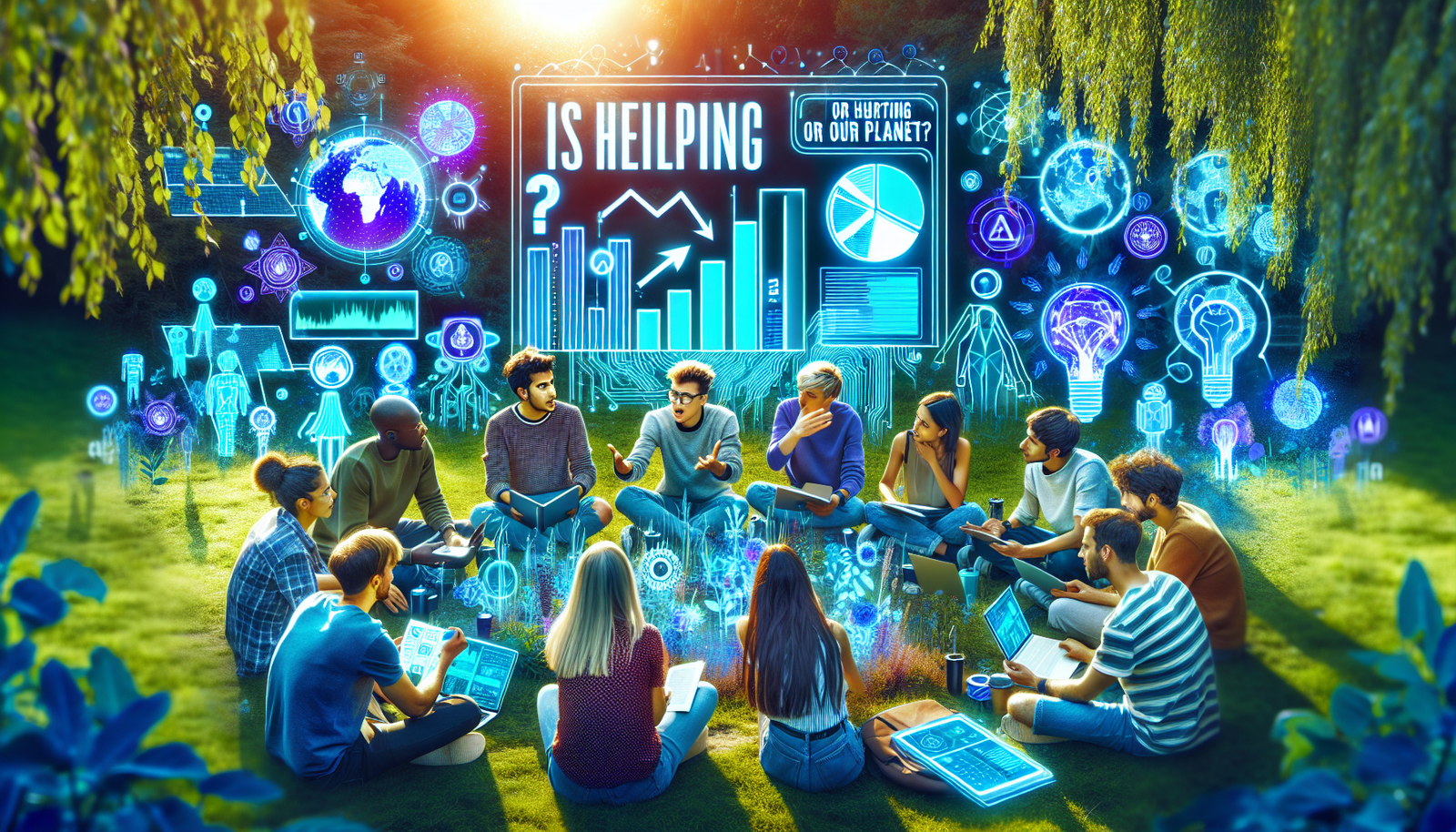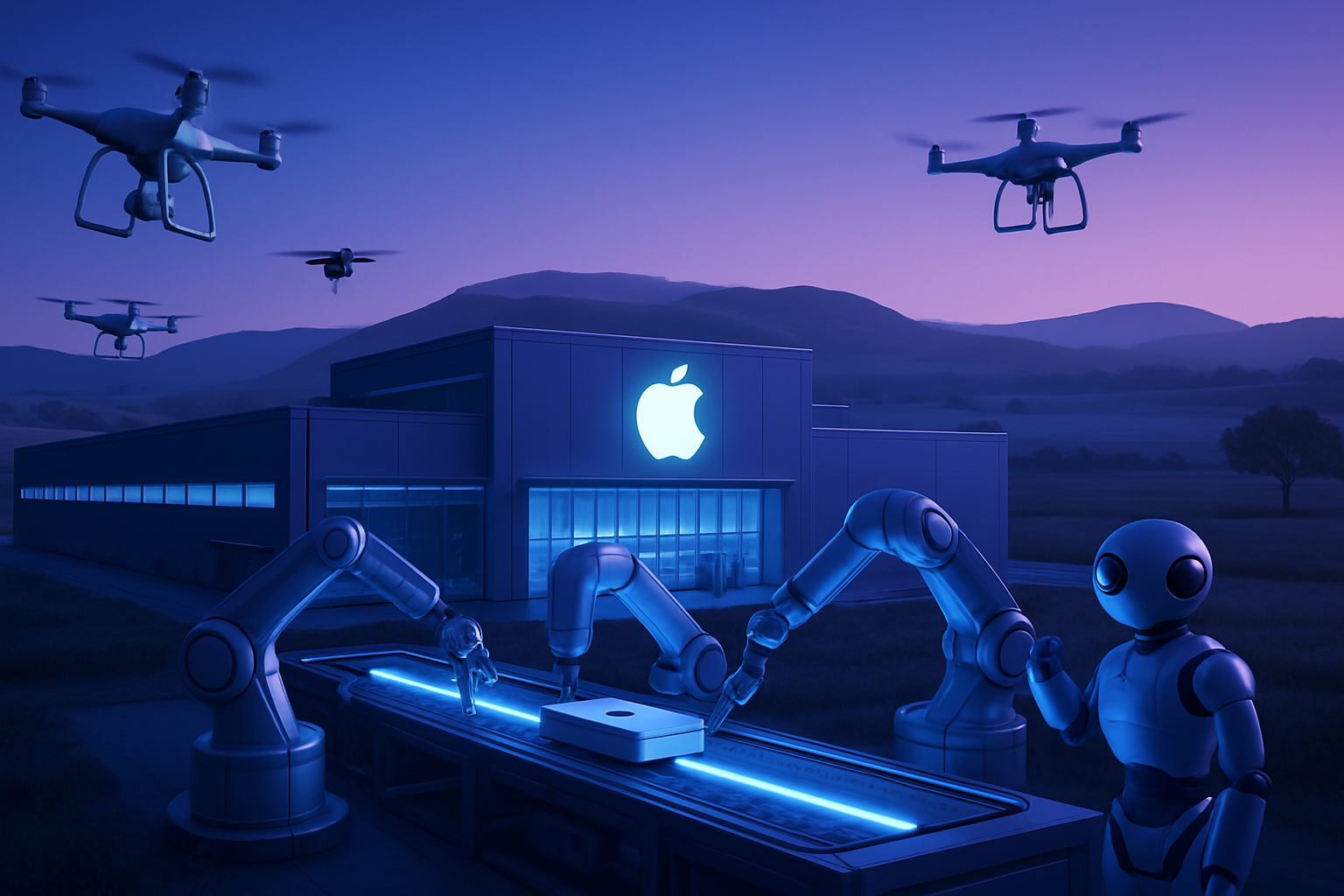The climate impact of generative artificial intelligence raises fundamental questions. This technology, omnipresent in our daily lives, would provoke environmental effects often unknown. Studies highlight an *exponential energy consumption* linked to these systems, significantly increasing their carbon footprint. Society finds itself at a crossroads: how to combine innovation and ecological responsibility in a world seeking sustainability? The necessity for increased vigilance regarding these issues emerges strongly. Assessing the real impact of these tools becomes imperative to guide tomorrow’s technological choices.
The environmental challenges of generative AI
The growing use of generative artificial intelligence raises significant concerns about its impact on the environment. According to the International Energy Agency, AI currently represents about 0.03% of global electricity consumption.
A study reveals that AI systems generate a notable carbon footprint, similar to that of other energy-intensive sectors. Complex algorithms, which demand increased computing power, result in carbon dioxide emissions often overlooked by users.
Energy consumption of AI models
AI systems rely on massive computing infrastructures, powered by data centers, which require enormous energy consumption. Managing these facilities involves not only technical challenges but also significant ecological implications.
Innovations such as resource optimization and the use of renewable energy are being highlighted. Experiments show that optimizing consumption, for example by reducing the operational climate of equipment, can decrease energy consumption by 20 to 30%.
Reduction of emissions through innovative practices
Initiatives undertaken by certain organizations aim to rectify the environmental effects of generative AI. For instance, real-time carbon telemetry systems allow for adjusting model usage based on the carbon intensity of electricity. This method has shown a reduction in emissions of up to 80% during various generative activities.
The development of tools such as climate-sensitive computer vision, capable of adapting to electricity fluctuations, represents a notable advancement. It has become imperative for the AI sector to orient towards more sustainable business models.
The role of consumers in the ecological transition
AI consumers have a predominant role to play in this context. The demand for transparency regarding the carbon footprint of AI products could encourage suppliers to adopt more sustainable practices.
Existing tools, such as flight comparison websites that display carbon footprints, provide a comparable evaluation framework for AI applications. Well-informed users can make informed choices based on ecological criteria.
Collaboration needed for a sustainable future
The scientific community and businesses must collaborate to mitigate the climate impact of AI. Institutions like Lincoln Laboratory are seeking synergies between data centers, AI developers, and energy networks to enhance efficiency.
In the long term, energy audits could reveal innovative approaches to reduce the carbon footprint of the entire technology sector.
Funding initiatives for alternative energy solutions, such as investing in small nuclear reactors, are also being discussed to support the operation of these infrastructures with a lighter footprint. The future may depend on networking these solutions.
Perspectives on the future of generative AI and the environment
Many facets of generative AI continue to evolve, ensuring both opportunities and challenges regarding climate impact. The potential for optimization through methods such as machine learning is a factor of hope, both for the economy and for the environment.
The growing awareness of ecological implications could change how innovations are designed and implemented. Every player involved in this industry must remain vigilant in order to reduce the negative effects on our planet.
The persistent dilemma remains: AI has the potential to effectively contribute to the ecological transition or risks exacerbating climate challenges.
The importance of a balanced approach cannot be overstated. A collective orientation could condition the success of sustainability efforts across the technological landscape.
Frequently Asked Questions: The Climate Impact of Generative Artificial Intelligence
What is the environmental impact associated with the use of generative artificial intelligence?
The use of generative AI leads to high energy consumption and significant CO2 emissions, thus contributing to the overall climate impact. For example, certain tasks such as image generation can emit the equivalent of several tons of CO2.
How does generative artificial intelligence contribute to climate change?
The processes involved in formulating AI models, such as data processing and algorithm training, require significant computing resources, thereby increasing energy consumption and greenhouse gas emissions.
What efforts are being made to reduce the climate impact of generative AI?
Strategies such as optimizing the energy efficiency of data centers, adopting eco-responsible behaviors, and using less energy-intensive models are being implemented to diminish this impact.
What types of technologies can help measure the carbon footprint of generative AIs?
Energy consumption analysis tools and real-time carbon telemetry systems are being developed to monitor and adjust the performance of algorithms according to the measured environmental impact.
How can users minimize their carbon footprint when using generative AI tools?
Users can choose AI platforms that offer transparency regarding their carbon footprint and opt for solutions that integrate assessments of environmental impact into their content generation processes.
Do the potential benefits of AI include solutions to mitigate climate change?
Yes, AI can optimize resource use, improve energy efficiency, and facilitate innovations that help combat climate change, while also needing to carefully manage its own environmental impacts.
What is the future of generative AI in light of increasing environmental concerns?
The future will require greater collaboration between AI developers, data centers, and energy networks to create sustainable solutions and reduce the technology’s carbon footprint.






